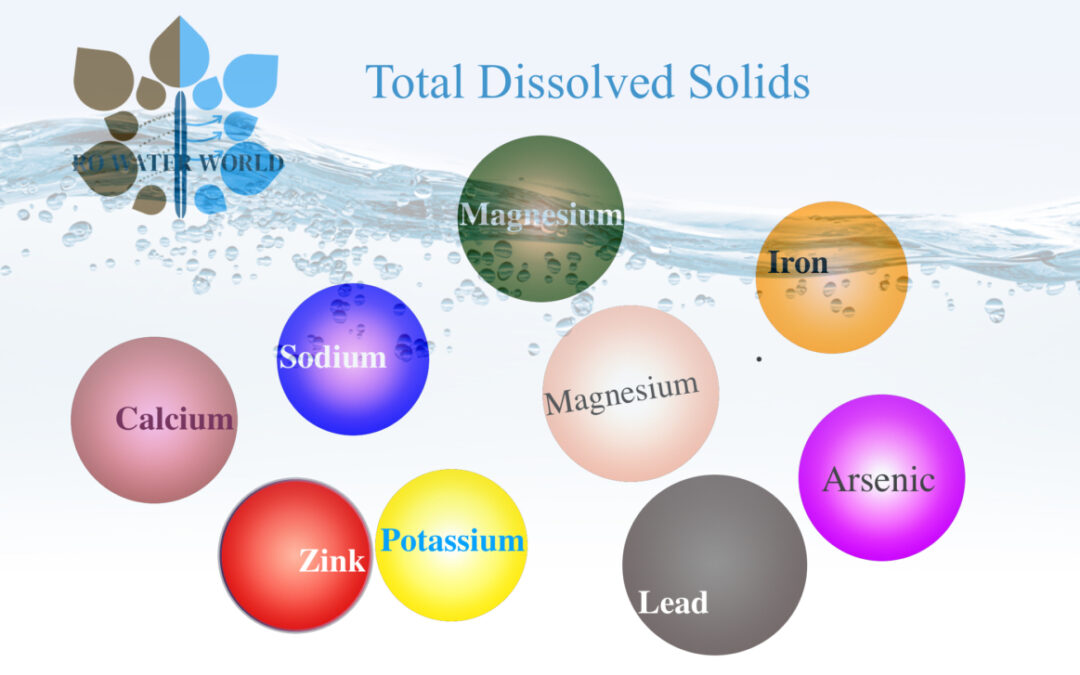TDS is the total concentration of all of the dissolved organic and inorganic substances in water.
The common inorganic substances that contribute to TDS are dissolved salts which are mainly of molecules negatively charged (anion) and positively charged (cation). The most common ions found in water include magnesium, iron, calcium, sodium, potassium, lead, arsenic and carbonates, bicarbonates, nitrates, sulfates, chlorides, etc.
Impurities, like mud, dirt, and rust, do not constitute the TDS. The reason is that these impurities do not dissolve and will remain suspended (or will settle at the bottom) in water.
TDS in water can originate from both natural causes and as a result of human activities. industrial wastewater, Sewage, and agricultural and urban run-off are the common causes of TDS in water.
Why do you have to be bothered about TDS?
Water available from many Indian water sources is polluted and unsafe for usage. The release of untreated pharmaceutical and industrial wastes into the water sources has led to dangerous levels of pollutants in the water bodies in India making it not suitable for direct consumption.
TDS in water constitutes the overall quality of your drinking water. Hence, testing TDS is the easiest way to know about your drinking water quality.
What is the acceptable limit of TDS in drinking water?
A high level of TDS is a direct indicator of potential concerns. While some minerals have little or no short-term health effects, contaminants like lead, cadmium, nitrate, arsenic, and some others, have a serious effect on your health. The acceptable limit of drinking water TDS is up to 500 mg/L, as suggested by the Bureau of Indian Standards (BIS). A TDS level of less than 100 to 200 is considered as good for drinking purposes.
|
TDS |
Quality of Water for Drinking |
|
Less than 50 |
Safe but not ideal. |
|
50-150 |
Acceptable. |
|
150-200 |
Acceptable. This range is ideal as far as cardiovascular fitness is considered. |
|
200-500 |
Acceptable depending upon the taste of the water |
|
Above 500 |
Not Acceptable. Use a RO water purifier to reduce the TDS. |
Is my water safe to drink if TDS is in an acceptable range?
TDS measures the solids in your water but does not indicate whether those solids are beneficial or hazardous. TDS alone can’t guarantee safe drinking water but a low TDS indicates a lower amount of concentration of hazardous substances.
How to make the water good for drinking?
There are advanced water purification technologies today which not only remove the excess TDS level but have many other smart features which can remove toxic elements from the water. For instance, UV (Ultraviolet) rays from UV filters kill the harmful bacteria from the water which passes through it so that the water is completely disinfected from pathogens.
Water purifiers using RO (Reverse Osmosis) have the ability to remove impurities from the water.
A RO water purifier can provide the following advantages:
1. Protects against bacteria
2. Protects against viruses and other parasites
3. Provide better taste to water
4. Protects against chlorine
Conclusion
It is best to get Water tested and then look for solutions as per the contents of it. Investing in a water purifier makes sense if it is found the TDS or other parameters are exceeding the required safe level prescribed for it. For details refer to this article.

